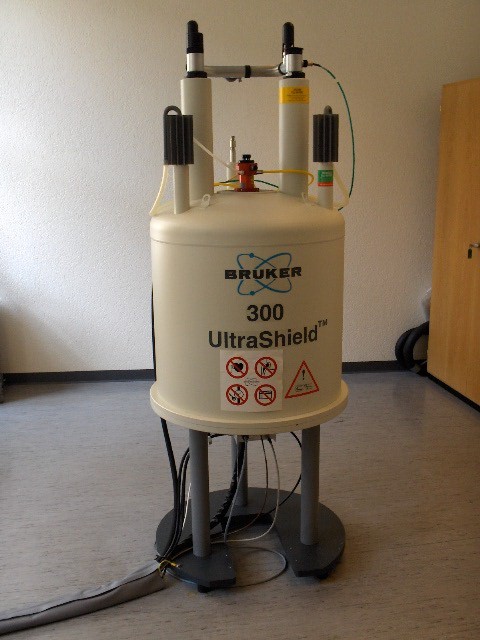We live in a nuclear age. We’ve harnessed the power of the atom to feed our thirst for energy, but new uses of the atom have the possibility to expand the annals of knowledge. Modern scientists are now turning to the power of the atom for its unbridled promise in the realm of computation.
Quantum Computers
The quantum computer has the potential to radically change the electronic age as we know it. A quantum computer is a theoretical construct for an advanced computing system that harnesses atomic properties for processing. Current computers will soon max out in speed, due to the limits of miniaturization; transistors and electrical wiring cannot be made slimmer than the width of an atom [1].
Quantum computing offers an alternative in the manufacturing of atom-wide circuits, resulting in much faster processing. Considering the massive calculations that quantum computers could perform, the possibilities seem endless. Programs could be made to simulate the quantum environment, something modern computers cannot even begin to model. These programs could simulate the experiments conducted in billion dollar facilities that are currently being constructed in order to help us better understand the universe.
In addition, medical programs could greatly benefit from quantum computing. Doctors could explore the human body and experiment on simulated environments, advancing medical research enormously. Another area of computing possibilities is the prime factorization of large numbers. Prime factorization is a mathematical algorithm that many organizations use for encryption. It is very hard to calculate in reverse; a modern computer might spend millions of years trying to perform the necessary calculations, rendering any hacking attempts laughable [1]. A quantum computer, however, might complete the required calculations in less than a year. On the other hand, quantum computers could be used to generate more powerful encryption techniques. Just as hacking becomes more powerful with greater resources, so does security. The only danger here is if one party has access to quantum computing and the other does not. When the technology for quantum computing is achieved, it is imperative that it be accessible to everyone.
How do they work?
Clearly quantum computers offer huge potential when compared to the desktop PC of today, but why are they so much faster? What causes our modern machines to seem so uselessly sluggish in comparison? A basic explanation of how the two differ will illustrate. Modern computers manipulate information in the form of on and off signals. Ones (on) and zeroes (off) form a binary mathematics that is the fundamental basis of current computing. Two bits can form four combinations of on and off states. In a standard PC you might have 8 billion bits, providing a fairly large potential for information (see Fig. 1).
Quantum computing accomplishes this task differently. Quantum bits, often referred to as quebits, can attain multiple states simultaneously-each state having a probability. So each combination of on and off would require a probability. The amount of combinations grows rapidly: for n quebits there are 2n different states, each having a probability associated with it [1]. An example of how the two perform a task can help us visualize the process. A good example comes from Scientific American, illustrating how a modern computer and a quantum computer would find the right combination for a lock. Take a lock with 4 numbers: 0, 1, 2, 3; and any one number needed to unlock it. A modern computer would try each number in turn: is ‘1’ correct? Is ‘2’ correct? And so on. It would potentially try all 4 numbers, until it found the correct number. A quantum computer would test multiple numbers at the same time and get a unique answer for each potential correct answer. The modern computer averages n/2 guess, whereas the quantum computer needs only the square root of n [1].
Some find the idea of simultaneous opposing states hard to swallow. Quantum mechanics, which is the basis for our current theories of the standard model, has a few basic definitions that are helpful when understanding this ‘strange’ coexistence characteristic: Quantization: observable quantities do not vary continuously but come in discrete chunks, or quanta. This characteristic makes computation, classical or quantum, possible. Interference: the outcome of a quantum process, in general, depends on all the possible histories of that process. This makes quantum computers qualitatively more powerful than classical ones. Entanglement: the properties of a composite system, even when the components are distant and non-interacting, cannot in general be fully expressed by descriptions of the properties of all the component systems. This makes quantum cryptography possible [2].
How do you Make a Quantum Computer?
Even with an understanding of how quantum computers would work, how does one go about building one? This idea is to build logic gates and then use quantum circuits to implement them [2]. It turns out that by reading the states of liquid molecules, we form a rough interface with their quantum properties. Using a technique known as nuclear magnetic resonance (NMR), it becomes possible to manipulate quantum characteristics [1]. This method requires that the liquid molecules be held in a secluded state so that they are not influenced by outside molecules. Two magnets are used to suspend the molecules in an environment of their own. Then using NMR (see Fig. 2) their states are read. The states can be altered using factors like magnetic fields and radio frequencies.
One big problem is that the NMR techniques used to read the state of the molecule disrupt that state. So as soon as data is read, it is lost. A method used to correct this is by using lots of molecules, and reading only one. This way the others will do work to return the one disturbed molecule to its original state. Another current setback is the need for these operations to be performed at near absolute zero temperatures. Researchers Isaac Chuang of Los Almos National Laboratory, Neil Gershenfeld of The Massachusettes Institute of Technology, and Mark Kubinec of The University of California Berkeley are attempting to solve this problem by using foreign atoms. They are finding promise in the use of chloroform to implement some standard algorithms that would be used by quantum computers [3]. Another problem lies in the task of sustaining several quantum bits at the same time. As it is, the magnetic fields required to sustain a quantum bit interfere with each other in when in close proximity. Either another method of sustaining or a way of accounting for the interference must be developed.
Yasnuobu Nakamura and his co-workers at the NEC Fundamental Research Laboratories in Tsukuba, Japan, have designed a quantum bit sustained on a silicon chip. This chip is basically a small piece of aluminum placed between two pieces of silicon. This chip holds great advantages, as the magnetic fields required for the NMR technique are no longer a problem. However, the chip must be held at temperatures near absolute zero to insure its superconducting state. These chips have to be held and read with the utmost precision. They are appended by adding electrons to their existing structures.
Scientific American describes the process: “Two small junctions connect the dot to a larger aluminum reservoir, and an applied voltage aligns the energy levels in dot and reservoir so that a single Cooper pair can tunnel back and forth from reservoir to dot. This forms the 0 and 1 of the device; the absence or presence of one extra Cooper pair in the finger, which is then called a single-Cooper-pair box” [2]. One must add extremely small amounts of voltage to change the state from on to off.
Much more research needs to be done in order to make the process practical and repeatable. Many advances have been and are being made in the field of quantum computing. With years of research, the sheer computational power that it affords will one day not only be a quantum possibility, but a quantum reality.





